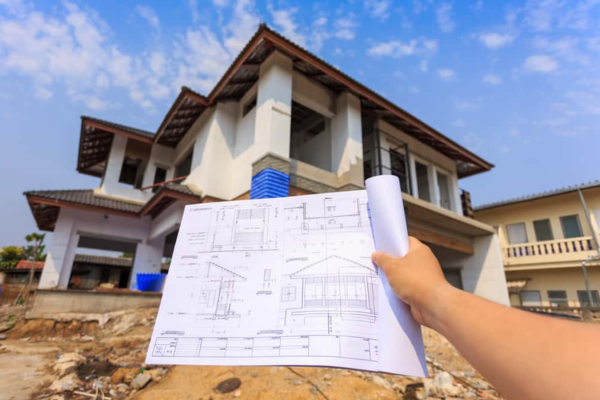Are you thinking about becoming a construction estimator but not sure where to start? If the world of blueprints, numbers, and bids feels overwhelming, don’t worry — you’re not alone. Every professional estimator started exactly where you are now: at the beginning.
The good news? One of the best (and smartest) ways to break into the field is by starting with residential estimating services. In this post, we’ll explore why residential projects are ideal for beginners, walk you through the steps to get started, share practical tips to build your confidence, and leave you with a clear path forward.
Let’s dive in!
Why Start with Residential Estimating?
The construction world is vast — commercial, industrial, infrastructure, and more. But for newcomers, residential estimating offers the perfect entry point. Here’s why:
· Simpler Scope: Residential projects are typically smaller and less complex than commercial ones.
· Faster Turnaround: You can complete estimates quicker, which means more opportunities to learn and improve.
· High Demand: Builders, contractors, and homeowners are constantly looking for help with estimates.
· Real-World Relevance: You’ll gain hands-on experience with projects like kitchens, bathrooms, and home additions — things you might even tackle in your own home one day!
So whether you're transitioning into construction estimating or looking to sharpen your skills, starting with residential jobs gives you the foundation you need to grow.
Step-by-Step Guide to Getting Started
Step 1: Understand the Basics
Before diving into numbers, you need to understand what a residential estimator actually does. Your job is to determine how much a construction project will cost, including materials, labor, equipment, permits, and overhead. Your estimate helps clients make informed decisions and allows contractors to plan efficiently.
Start by learning the following:
· Reading blueprints and floor plans
· Common construction terminology
· Types of materials and their costs
· Basic labor rates for your region
Step 2: Choose Your Tools
You don’t need fancy software to get started, but having the right tools helps. Begin with:
· Digital takeoff software like PlanSwift, Bluebeam Revu, or Stack (many offer free trials)
· Spreadsheet software (Excel or Google Sheets) to organize and calculate estimates
· A good construction calculator
· Access to RSMeans or other cost databases for accurate pricing
Step 3: Practice with Sample Projects
Don’t wait for a client to start estimating. Find sample residential plans online (many are free), and practice estimating:
· Material quantities (e.g., how many square feet of drywall)
· Labor hours needed for each task
· Total costs for the project
Start small — try estimating a bathroom remodel or a single-story garage — and gradually move up to full homes.
Step 4: Offer Free or Discounted Estimates to Gain Experience
Once you feel confident with practice projects, offer free or low-cost estimates to local contractors or friends working on home projects. Be clear that you’re building experience, and use each project as a learning opportunity. Most people are happy to help someone willing to learn and grow.
Step 5: Learn the Legal and Ethical Side
Estimating isn’t just about math — it’s about trust. Clients and contractors rely on you to be accurate and honest. Make sure you:
· Understand local building codes and permit requirements
· Avoid underbidding just to win a job
· Clearly communicate what your estimate includes and excludes
Being ethical and transparent builds your reputation — and in this business, reputation is everything.
Step 6: Keep Improving
Estimation is a skill that sharpens over time. Join online forums, take online courses, and watch YouTube tutorials. The more you immerse yourself in the industry, the more confident and accurate you’ll become.
Practical Tips for Beginner Estimators
Here are a few quick tips to help you on your journey:
1. Double-Check Everything
Errors in takeoffs or pricing can cause major issues. Always review your work before submitting an estimate.
2. Build a Template
Create a reusable estimating template in Excel or Google Sheets. This saves time and helps you stay consistent.
3. Stay Current with Prices
Material costs can change rapidly. Use up-to-date pricing tools or call local suppliers regularly.
4. Ask for Feedback
When you submit an estimate, ask contractors or clients for feedback. What did you miss? What can you improve? This feedback is gold.
5. Don’t Be Afraid to Say “I Don’t Know”
If you’re unsure about something, it’s okay to ask or do more research. Estimating is part art, part science — no one gets it perfect every time.
Conclusion:
Starting something new can be intimidating, but remember this — every expert estimator began where you are now. The difference between someone who makes it and someone who doesn’t? They started.
Residential estimating services are the ideal place to begin your journey. They’re manageable, rewarding, and full of opportunities to learn and grow. Whether you’re aiming for a full-time career or just testing the waters, every estimate you complete builds your confidence and skill set.
So don’t wait for the “perfect time” — there isn’t one. Download a sample floor plan, open up your spreadsheet, and start estimating. One project at a time, you’ll get better — and before you know it, you’ll be the go-to estimator everyone trusts.



